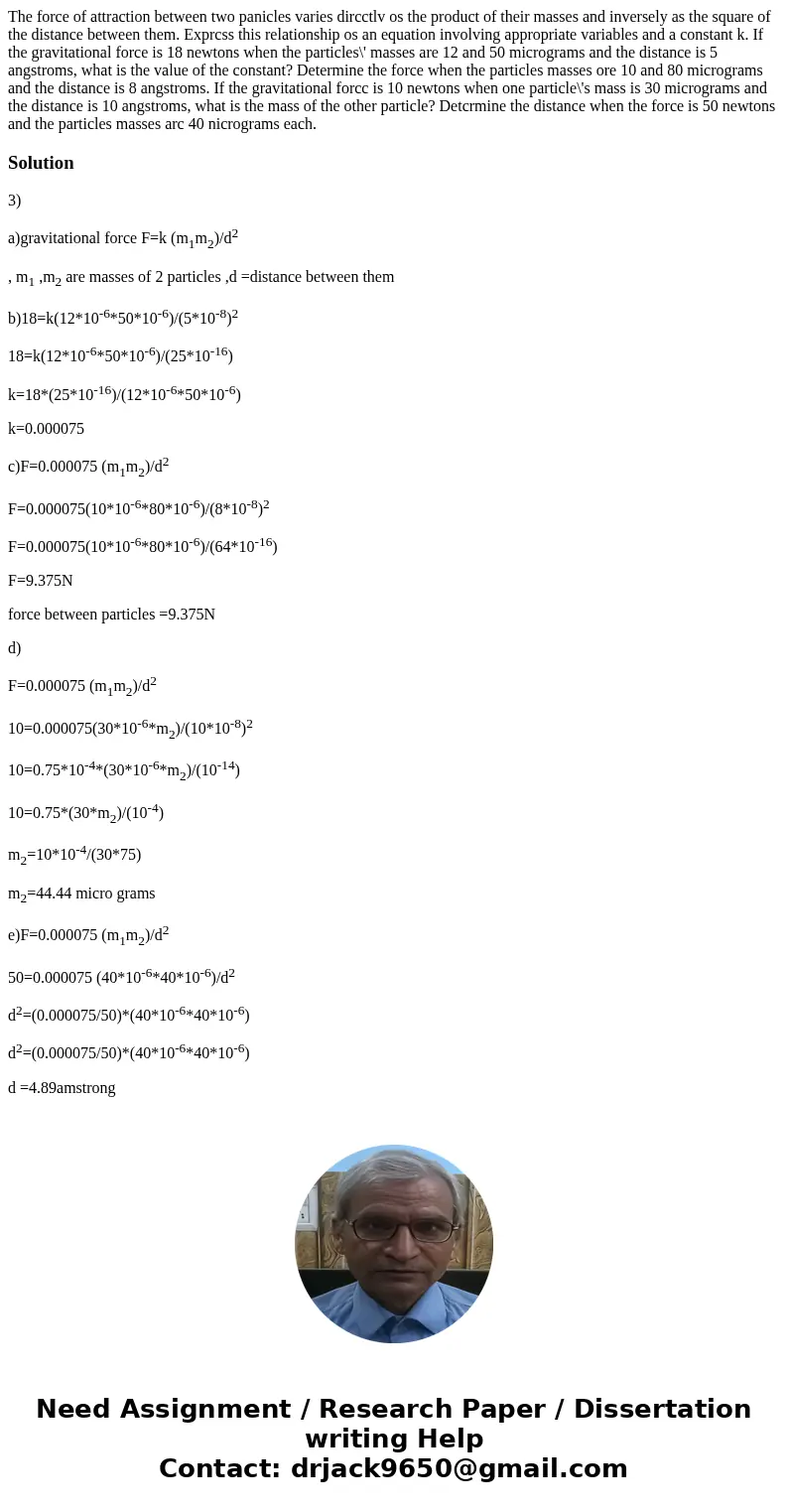The force of attraction between two panicles varies dircctlv
The force of attraction between two panicles varies dircctlv os the product of their masses and inversely as the square of the distance between them. Exprcss this relationship os an equation involving appropriate variables and a constant k. If the gravitational force is 18 newtons when the particles\' masses are 12 and 50 micrograms and the distance is 5 angstroms, what is the value of the constant? Determine the force when the particles masses ore 10 and 80 micrograms and the distance is 8 angstroms. If the gravitational forcc is 10 newtons when one particle\'s mass is 30 micrograms and the distance is 10 angstroms, what is the mass of the other particle? Detcrmine the distance when the force is 50 newtons and the particles masses arc 40 nicrograms each. 
Solution
3)
a)gravitational force F=k (m1m2)/d2
, m1 ,m2 are masses of 2 particles ,d =distance between them
b)18=k(12*10-6*50*10-6)/(5*10-8)2
18=k(12*10-6*50*10-6)/(25*10-16)
k=18*(25*10-16)/(12*10-6*50*10-6)
k=0.000075
c)F=0.000075 (m1m2)/d2
F=0.000075(10*10-6*80*10-6)/(8*10-8)2
F=0.000075(10*10-6*80*10-6)/(64*10-16)
F=9.375N
force between particles =9.375N
d)
F=0.000075 (m1m2)/d2
10=0.000075(30*10-6*m2)/(10*10-8)2
10=0.75*10-4*(30*10-6*m2)/(10-14)
10=0.75*(30*m2)/(10-4)
m2=10*10-4/(30*75)
m2=44.44 micro grams
e)F=0.000075 (m1m2)/d2
50=0.000075 (40*10-6*40*10-6)/d2
d2=(0.000075/50)*(40*10-6*40*10-6)
d2=(0.000075/50)*(40*10-6*40*10-6)
d =4.89amstrong

 Homework Sourse
Homework Sourse